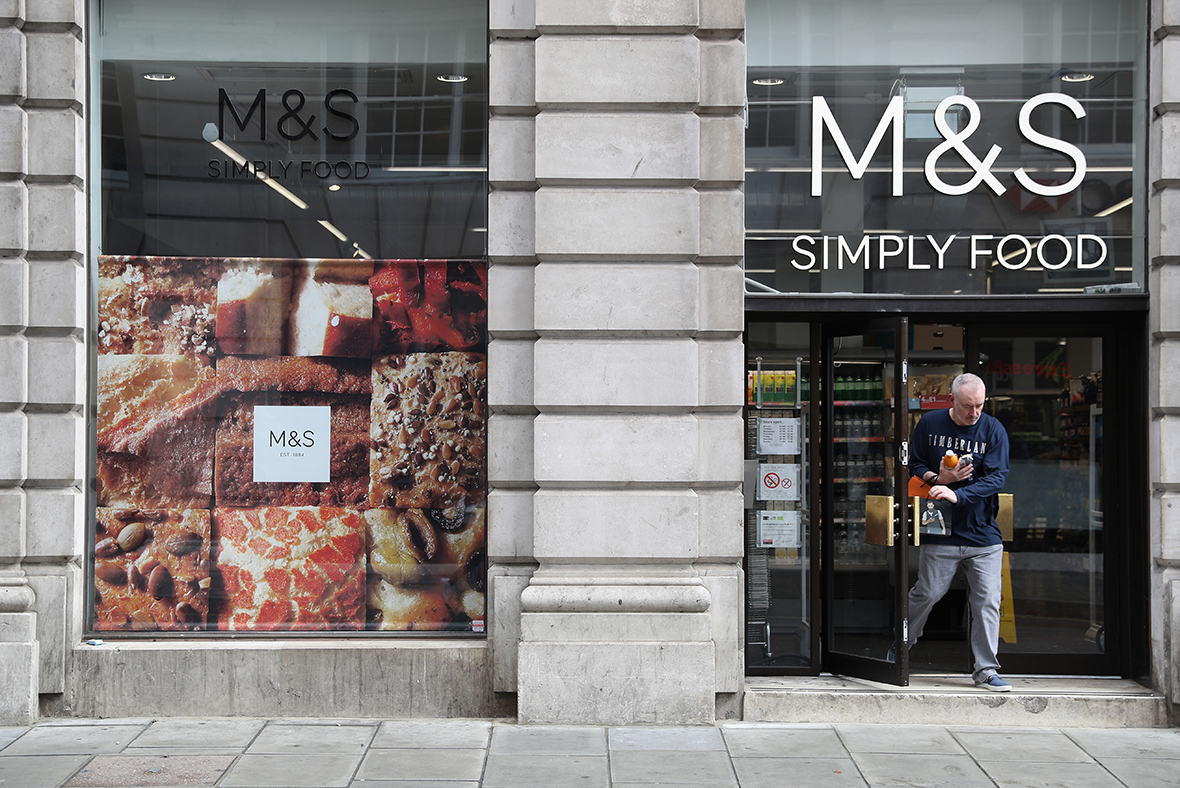Cybersecurity Failure Costs Marks & Spencer £300 Million

Table of Contents
The Scale of the Marks & Spencer Cybersecurity Failure
The reported £300 million cost associated with the Marks & Spencer cybersecurity failure represents a monumental financial blow. This figure encompasses far more than just the direct financial losses from stolen data or disrupted operations. It represents a complex web of expenses, including:
-
Breakdown of the financial impact: Direct losses likely include the cost of investigating the breach, notifying affected customers, and potentially paying out compensation. Indirect losses are arguably even more significant, encompassing lost sales due to operational downtime, decreased customer trust leading to lost future revenue (customer churn), and increased marketing and PR costs to repair the damaged brand reputation.
-
Legal and regulatory penalties incurred: Data breaches often trigger investigations and potential penalties from regulatory bodies like the Information Commissioner's Office (ICO) in the UK, adding substantially to the overall cost. These fines can be substantial, depending on the severity of the breach and the company's response.
-
Costs associated with restoring systems and data: Rebuilding compromised systems, restoring data from backups, and implementing new security measures all contribute significantly to the recovery cost. This involves not only IT resources but also potentially the expertise of external cybersecurity consultants.
-
Estimates of long-term reputational damage and loss of customer trust: The long-term impact on M&S's reputation is arguably the most difficult to quantify. Lost customer trust can lead to sustained decreased sales and a diminished brand image, ultimately affecting profitability for years to come. This intangible cost is often far greater than the immediate financial losses.
Potential Causes of the Cybersecurity Breach at Marks & Spencer
Pinpointing the exact cause of the M&S breach requires internal investigation reports, which are typically not publicly available. However, several potential vulnerabilities could have been exploited:
-
Phishing attacks: These highly effective attacks target employees through deceptive emails or websites, tricking them into revealing sensitive information like login credentials or downloading malware.
-
Ransomware attacks: Ransomware encrypts critical data and demands a ransom for its release. A successful ransomware attack can lead to significant downtime, data loss, and substantial ransom payments.
-
Software vulnerabilities: Outdated software or applications with known security flaws can create easy entry points for hackers.
The Role of Outdated Technology and Inadequate Security Measures
The significant cost of this cybersecurity failure strongly suggests that outdated technology and insufficient security measures played a crucial role. Specific factors may include:
-
Specific examples of insufficient security measures: This could include a lack of multi-factor authentication (MFA), which adds an extra layer of security beyond passwords; weak password policies allowing easily guessable passwords; and a lack of robust intrusion detection and prevention systems.
-
The importance of regular security audits and penetration testing: Regular security audits and penetration testing (simulated cyberattacks) identify vulnerabilities before they can be exploited. These are crucial preventative measures that should be integral to any organization's cybersecurity strategy.
Lessons Learned and Best Practices for Preventing Similar Cybersecurity Failures
The M&S case underscores the vital importance of proactive cybersecurity measures. Businesses of all sizes can learn from this incident and implement these best practices:
-
Importance of comprehensive employee cybersecurity training programs: Educating employees about phishing scams, malware, and secure password practices is crucial. Regular training sessions should be mandatory.
-
Regular security audits and vulnerability assessments: These audits identify weak points in the IT infrastructure and allow for timely remediation.
-
Investment in robust security technologies: Investing in firewalls, intrusion detection and prevention systems (IDS/IPS), endpoint protection software, and data loss prevention (DLP) tools is essential.
-
Implementation of strong password policies and multi-factor authentication: MFA adds a significant layer of security, making it far more difficult for hackers to gain unauthorized access.
-
Development and regular testing of incident response plans: A well-defined plan outlines the steps to take in the event of a breach, minimizing its impact.
-
Importance of data encryption and backup strategies: Encrypting sensitive data both in transit and at rest makes it much more difficult for hackers to access. Regular backups ensure business continuity in the event of a data breach or system failure.
The Long-Term Impact on Marks & Spencer's Reputation and Customer Trust
The long-term consequences of this breach are potentially far-reaching:
-
Potential loss of customers due to concerns about data security: Customers may lose trust and switch to competitors perceived as having better data security practices.
-
Damage to the company’s reputation and brand value: The negative publicity surrounding the breach can significantly harm the company's brand image and reputation, impacting future business opportunities.
-
The importance of transparency and communication with customers following a breach: Open and honest communication with affected customers is crucial in mitigating reputational damage. A swift and transparent response can help to retain customer trust.
Conclusion
The Marks & Spencer cybersecurity failure underscores the devastating financial and reputational consequences of inadequate data protection. The £300 million cost serves as a stark reminder of the importance of proactive cybersecurity measures for all organizations, regardless of size. The case highlights the need for a multi-layered approach, encompassing robust technology, employee training, and well-defined incident response plans. Ignoring cybersecurity best practices can lead to catastrophic financial and reputational losses.
Call to Action: Don't let a cybersecurity failure cripple your business. Invest in robust cybersecurity solutions, implement best practices, and protect your valuable data. Learn from the Marks & Spencer case and prioritize comprehensive cybersecurity strategies to avoid the potentially crippling costs of a data breach. Contact us today to assess your cybersecurity vulnerabilities and build a resilient defense against future threats.

Featured Posts
-
 Promena Imena Vanje Mijatovic Detalji I Razlozi
May 22, 2025
Promena Imena Vanje Mijatovic Detalji I Razlozi
May 22, 2025 -
 Are Streamers Finally Profitable A Look At The Evolving Business Model
May 22, 2025
Are Streamers Finally Profitable A Look At The Evolving Business Model
May 22, 2025 -
 600 Year Old Structure In China Partially Collapses Tourists Affected
May 22, 2025
600 Year Old Structure In China Partially Collapses Tourists Affected
May 22, 2025 -
 Mas Alla Del Arandano El Superalimento Para Un Envejecimiento Saludable Y Prevenir Enfermedades
May 22, 2025
Mas Alla Del Arandano El Superalimento Para Un Envejecimiento Saludable Y Prevenir Enfermedades
May 22, 2025 -
 Casper Residents Shocking Zebra Mussel Discovery On New Boat Lift
May 22, 2025
Casper Residents Shocking Zebra Mussel Discovery On New Boat Lift
May 22, 2025
Latest Posts
-
 Vstuplenie Ukrainy V Nato Pozitsiya Evrokomissara I Perspektivy Peregovorov
May 22, 2025
Vstuplenie Ukrainy V Nato Pozitsiya Evrokomissara I Perspektivy Peregovorov
May 22, 2025 -
 Peregovory O Vstuplenii Ukrainy V Nato Zayavlenie Evrokomissara
May 22, 2025
Peregovory O Vstuplenii Ukrainy V Nato Zayavlenie Evrokomissara
May 22, 2025 -
 Improving Safety Through Partnerships Free Bear Spray And Expert Training
May 22, 2025
Improving Safety Through Partnerships Free Bear Spray And Expert Training
May 22, 2025 -
 Boosting Safety Collaborative Bear Spray Initiatives And Training Programs
May 22, 2025
Boosting Safety Collaborative Bear Spray Initiatives And Training Programs
May 22, 2025 -
 Significant Changes To Jackson Elk Hunt Season Based On Public Input
May 22, 2025
Significant Changes To Jackson Elk Hunt Season Based On Public Input
May 22, 2025
